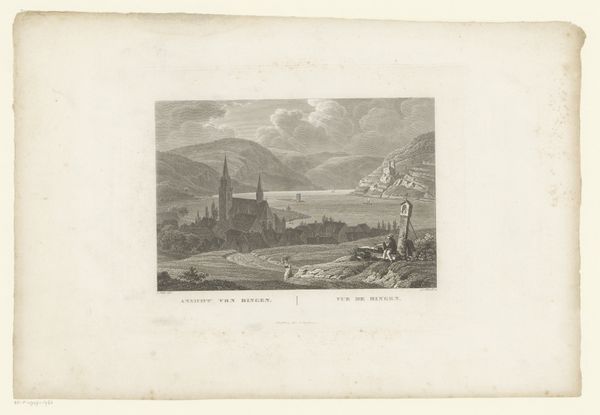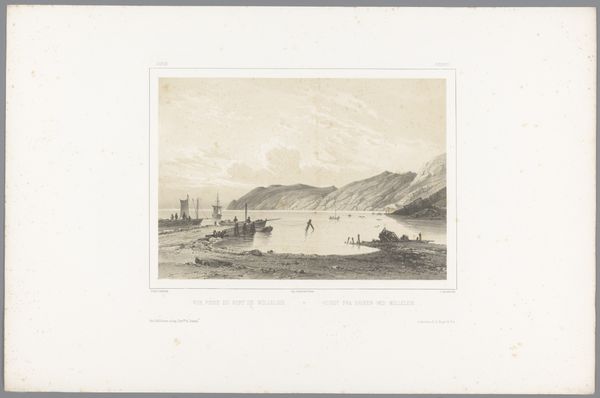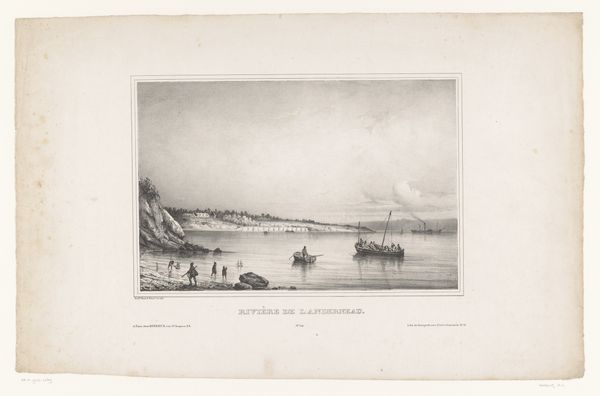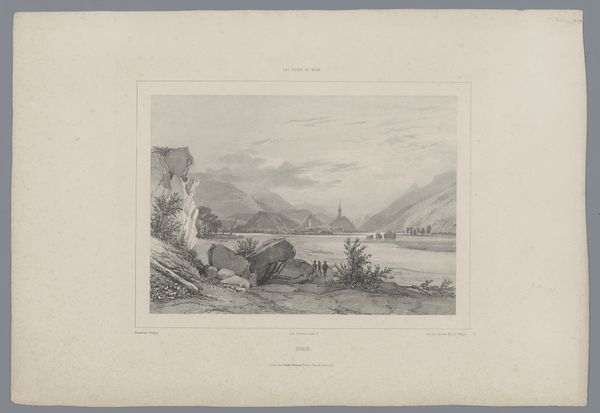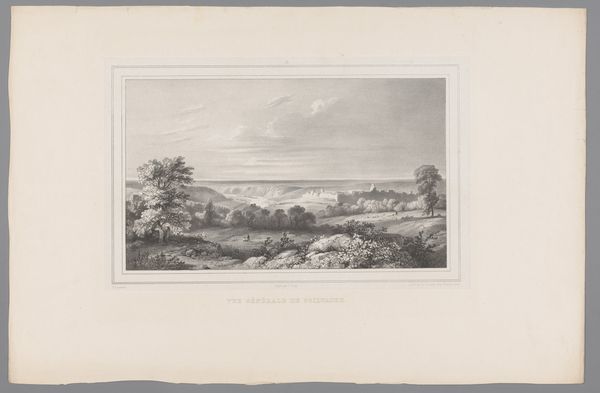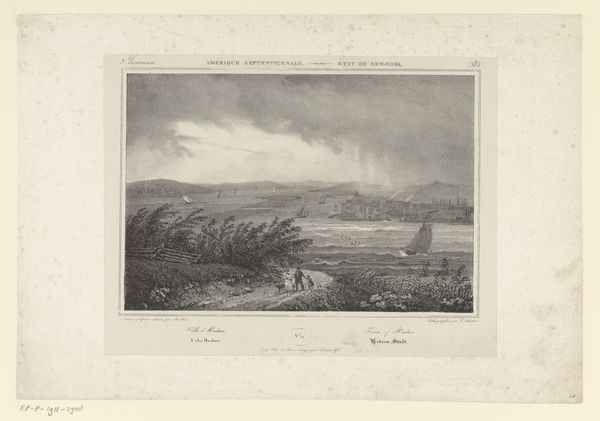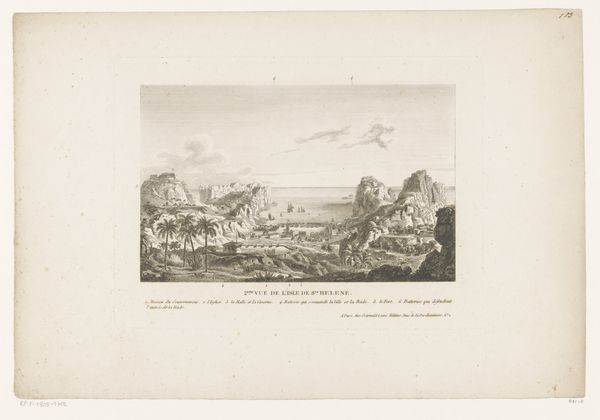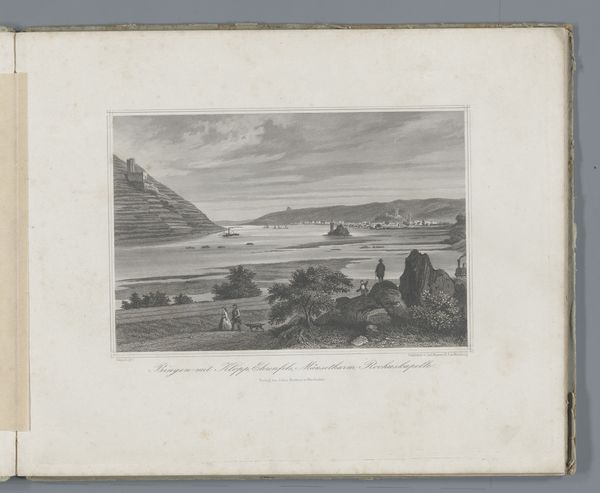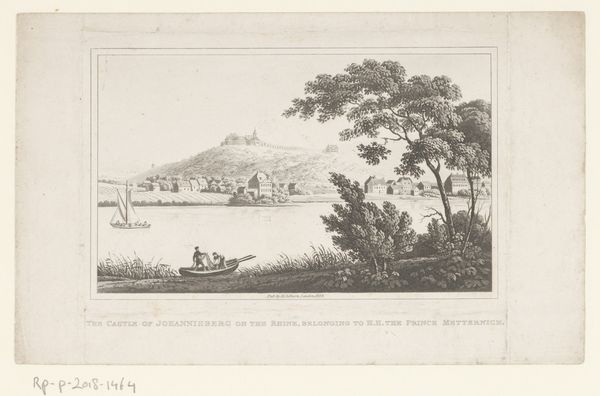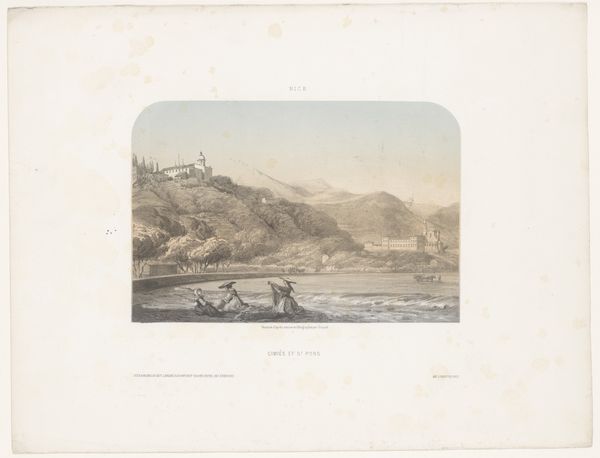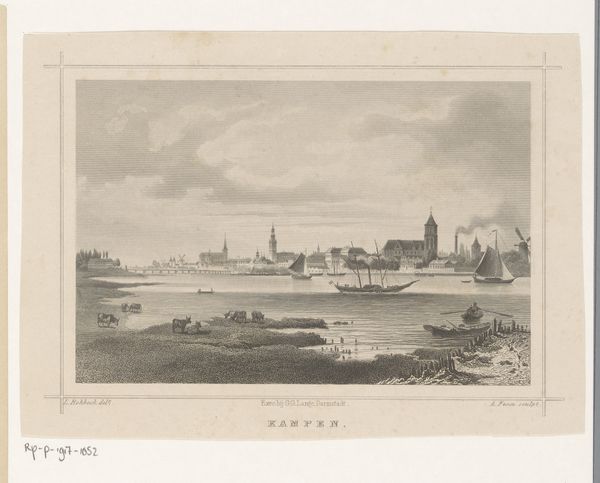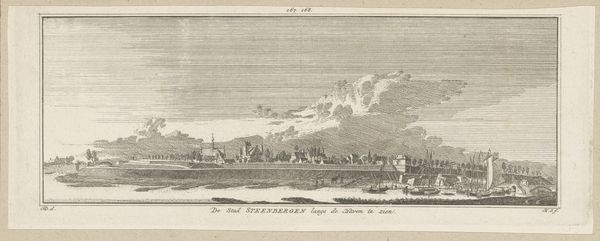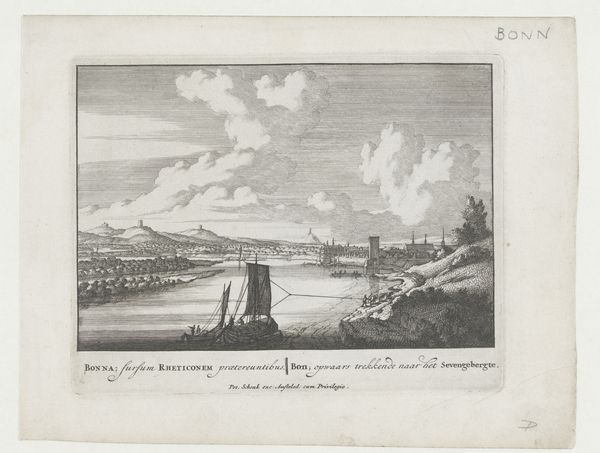
Gezicht op de stad Washington in 1800, vanaf de oever over het water gezien 1773 - 1826
0:00
0:00
print, engraving
#
neoclacissism
# print
#
landscape
#
classical-realism
#
cityscape
#
engraving
Dimensions: height 188 mm, width 255 mm
Copyright: Rijks Museum: Open Domain
Curator: The artwork before us is entitled, "Gezicht op de stad Washington in 1800, vanaf de oever over het water gezien," which translates to "View of the city of Washington in 1800, seen from the bank across the water." The piece, whose creator is listed as Hendrik Roosing, is a print, more specifically, an engraving, that historians estimate was made between 1773 and 1826. Editor: It evokes a quiet, almost melancholic mood. The greyscale palette really emphasizes the skeletal, burgeoning nature of this new capital. Look at the placement of those monumental clouds that practically dwarfs everything! Curator: Indeed. The linear precision characteristic of classical realism is evident in the depiction of the nascent cityscape and surrounding topography. The receding planes create a carefully constructed visual harmony, which places us as observers contemplating a grand vision taking shape. The work feels almost neoclassical, but has qualities all of its own. Editor: I'm immediately drawn to the details of material production present in the foreground – timber and barrel materials suggesting a bustling industry tied to construction, transportation, and early urban development of this region. The engraver is emphasizing labor and infrastructural challenges that face a burgeoning settlement. The print medium also raises considerations regarding its accessibility as a disseminator of ideas and promotional imagery about the US. Curator: I appreciate how the artist orchestrates depth, transitioning from foreground labor to the almost ethereal rendering of the cityscape itself, capturing the ideals of the enlightenment through perspective. It conveys aspirations towards permanence, even in this delicate medium of engraving. Editor: I see this image as a document connecting to the labor, the commerce, and distribution systems shaping the physical manifestation of power, reflecting those efforts needed to build something where nothing previously stood. Curator: I see the image as representing ideals rendered in nascent form, suggesting its completion and perfectibility are dependent upon factors we may not have foreseen in the time it was made. Editor: These buildings aren’t merely symbols but reflect real, tangible consequences resulting from political and economical choices, revealing complex relationship that early capitalism forged during that era. Curator: Precisely! Perhaps by revisiting and re-evaluating the foundational visual languages, such as classical realism, we, as contemporary observers, stand better positioned when reflecting on what that "grand vision" might have yielded through our present-day perspectives.
Comments
No comments
Be the first to comment and join the conversation on the ultimate creative platform.
